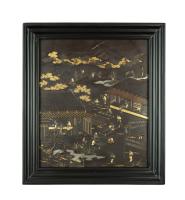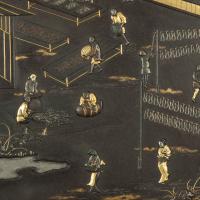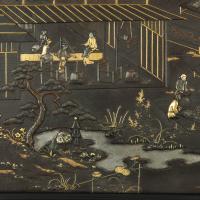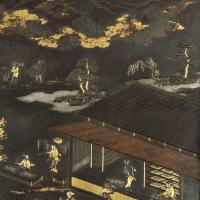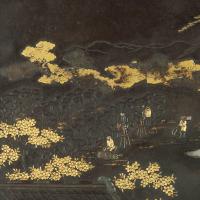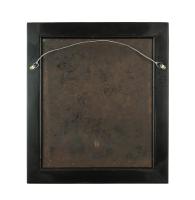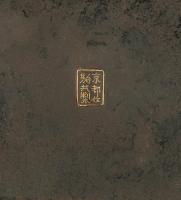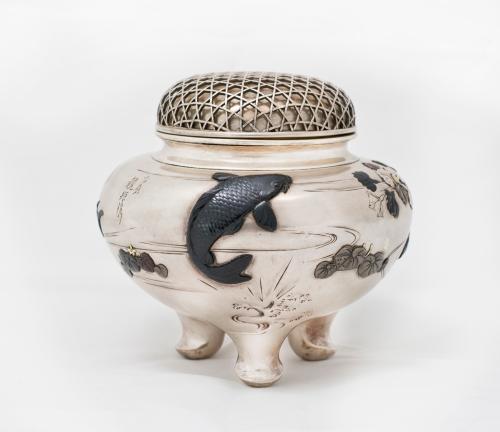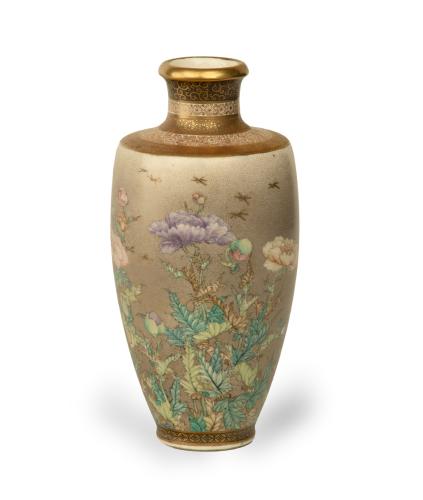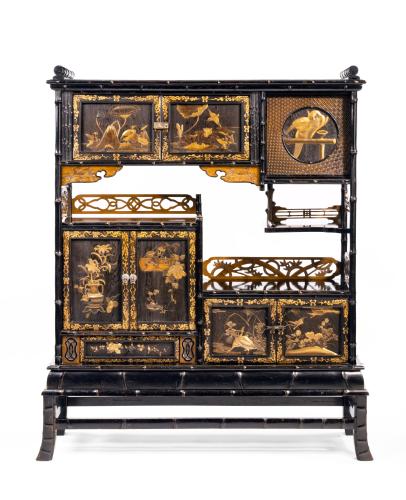
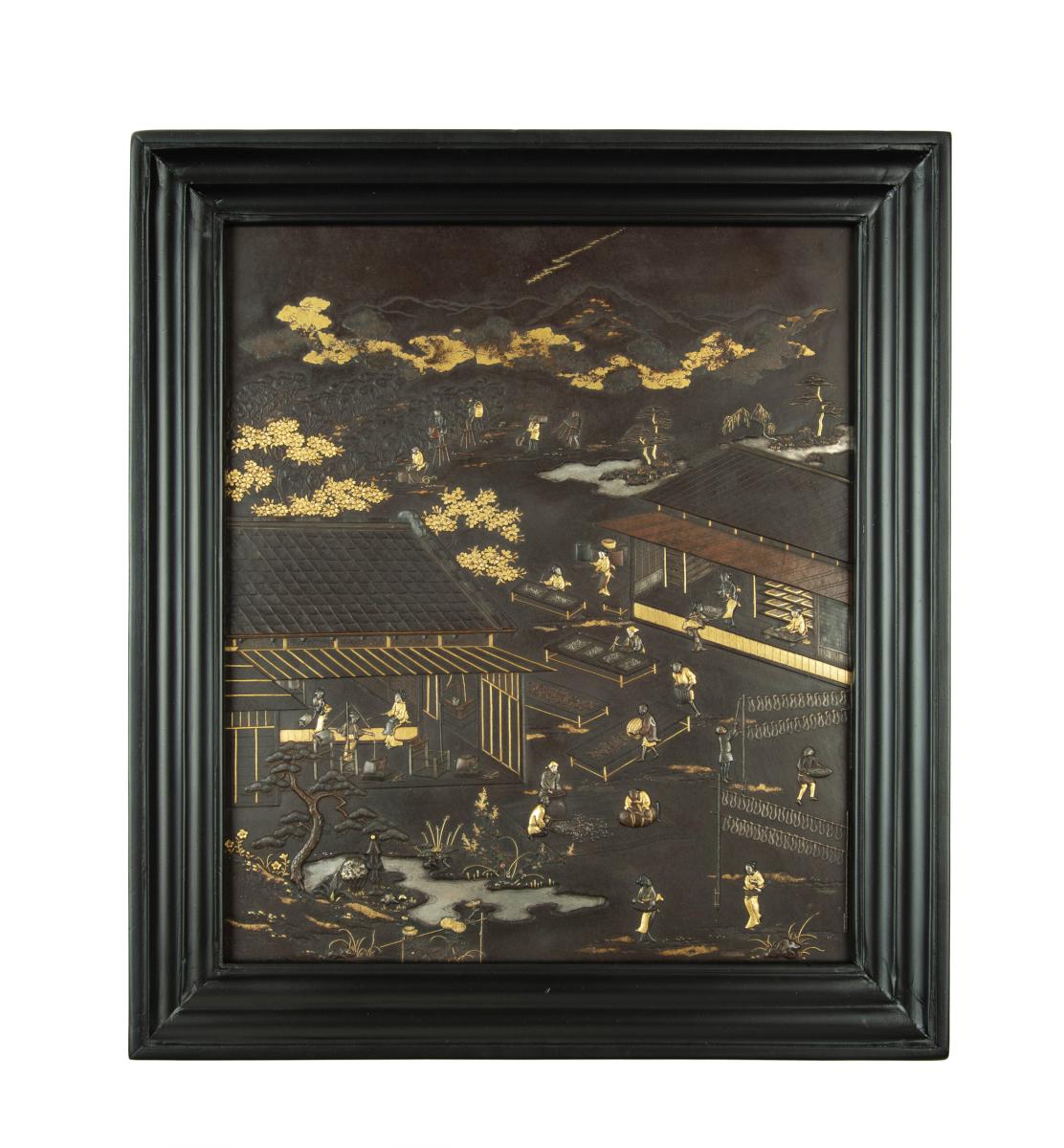
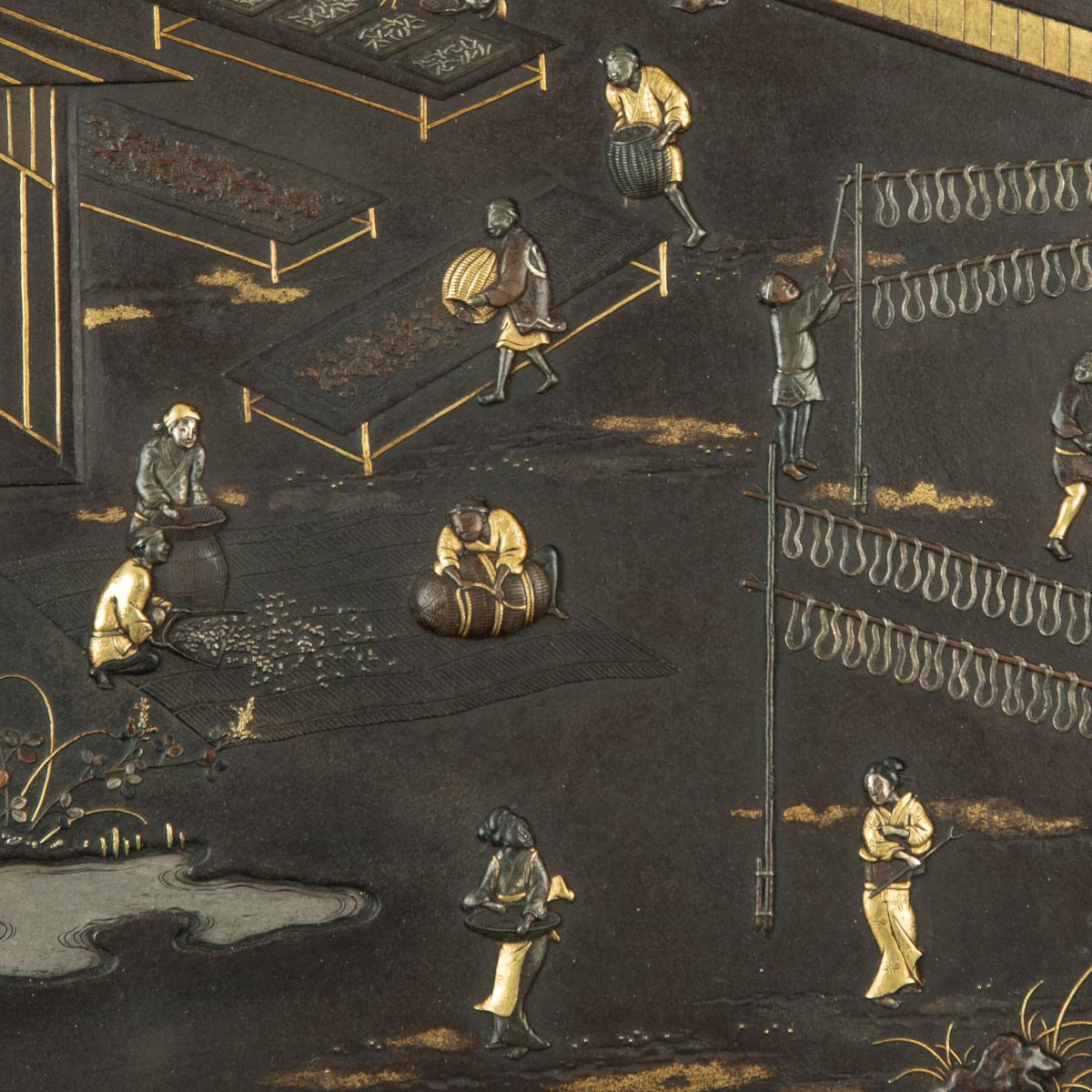
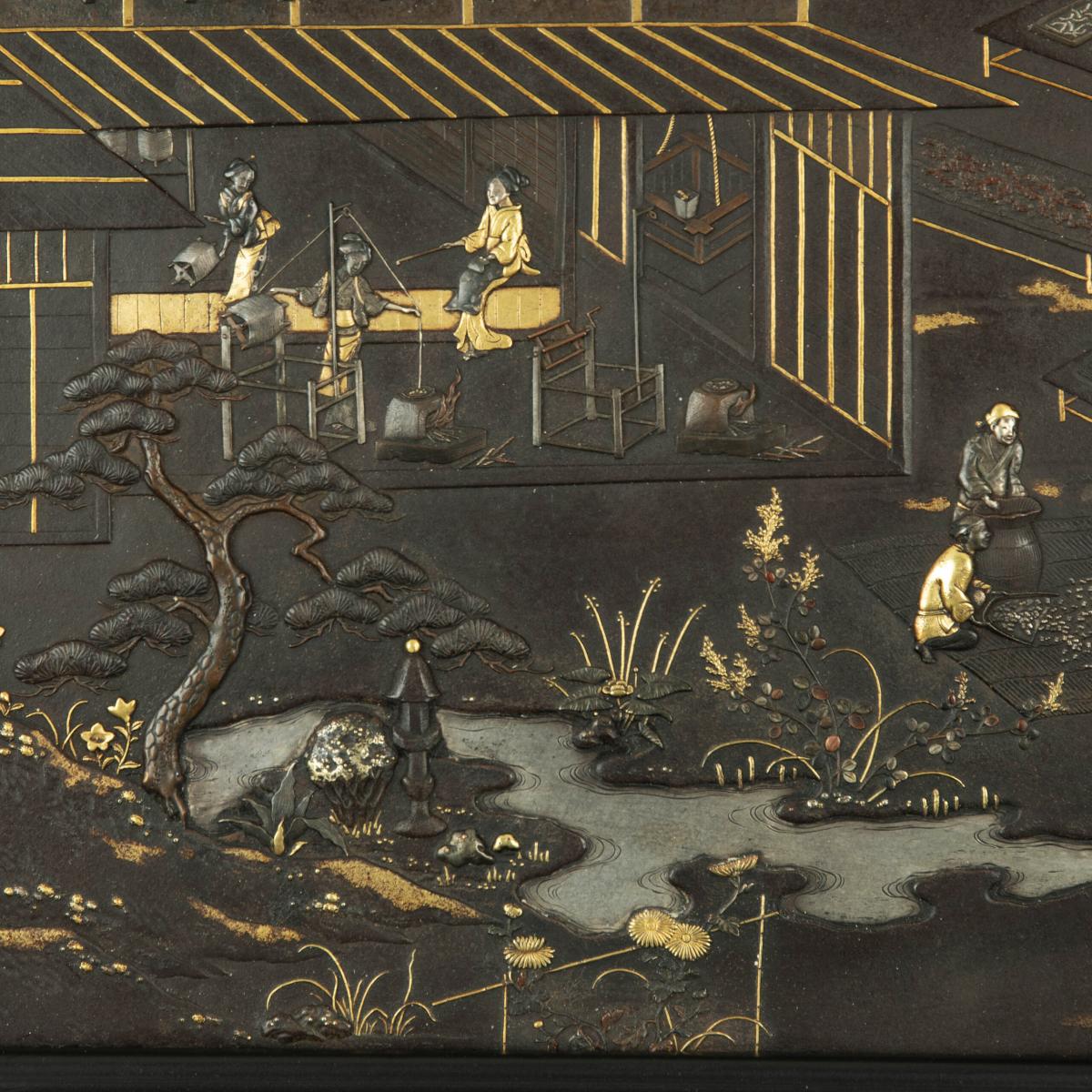
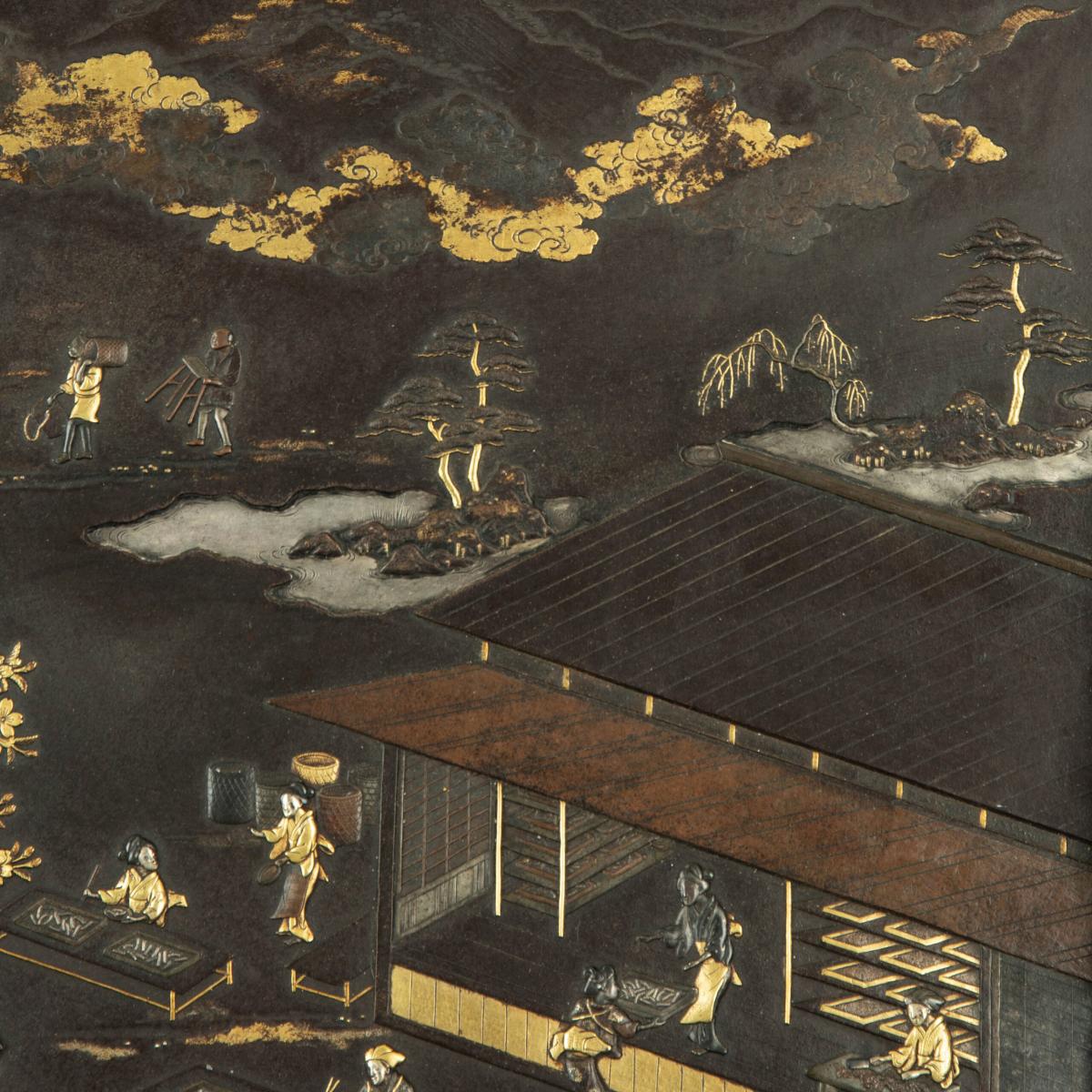
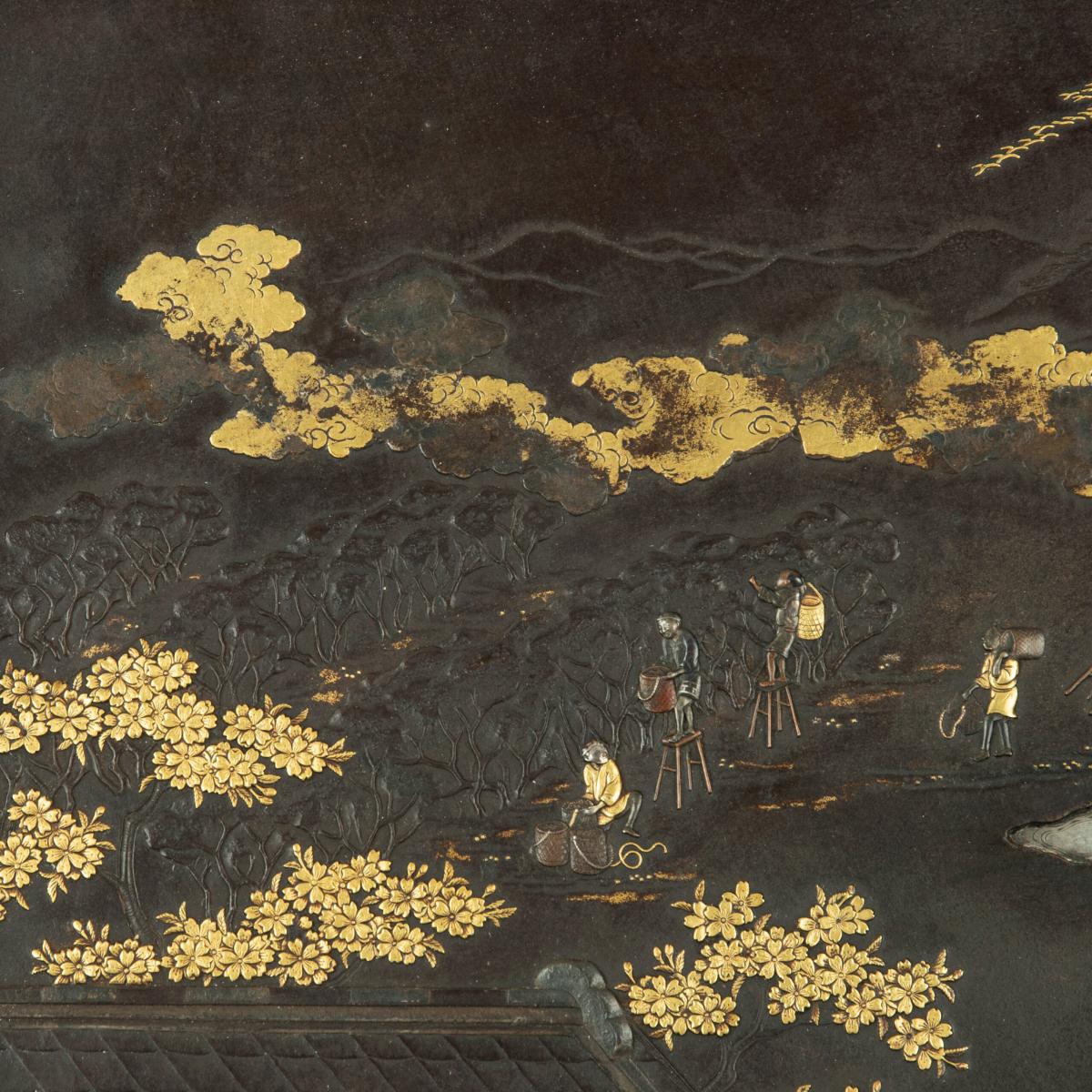
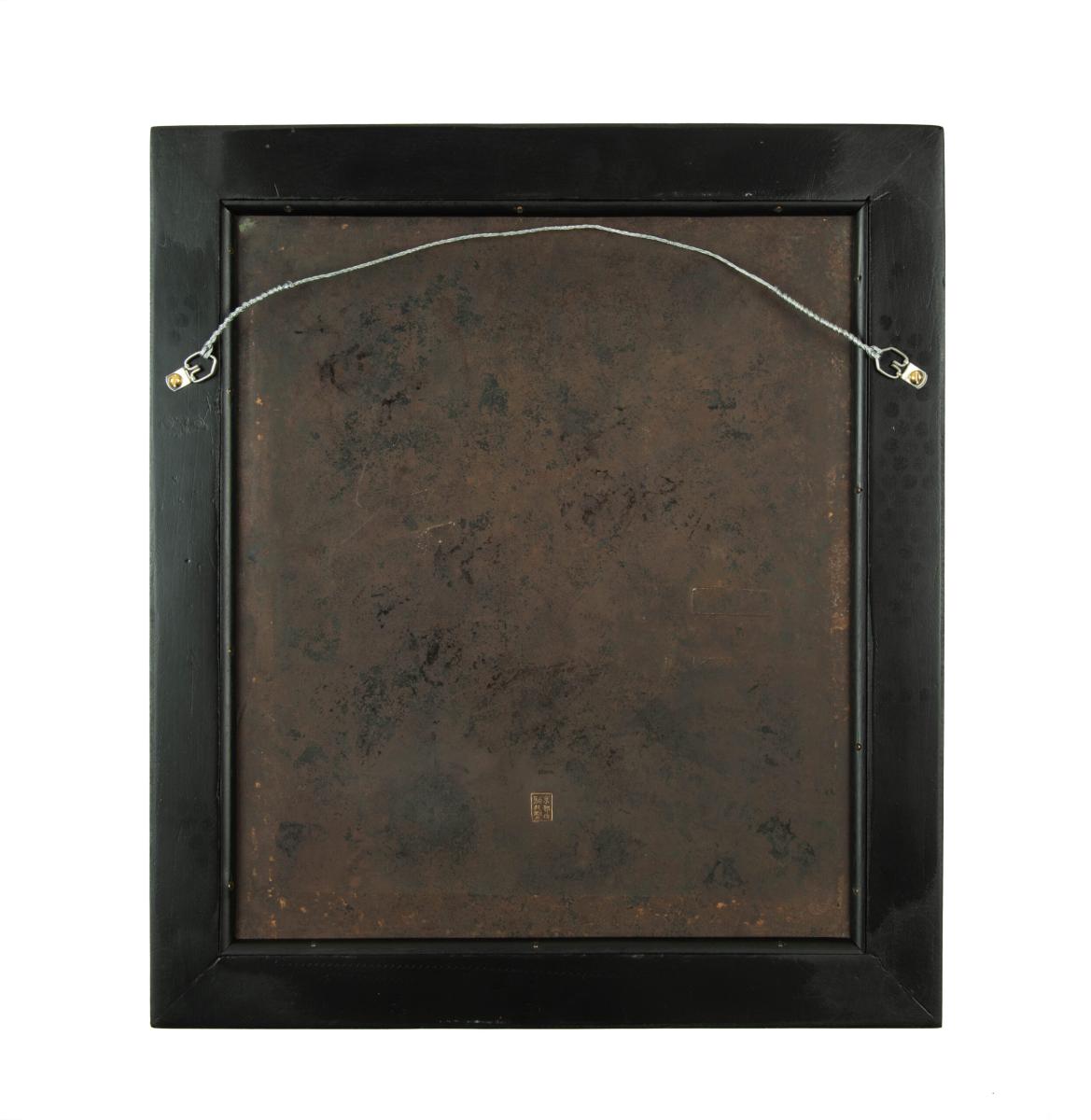
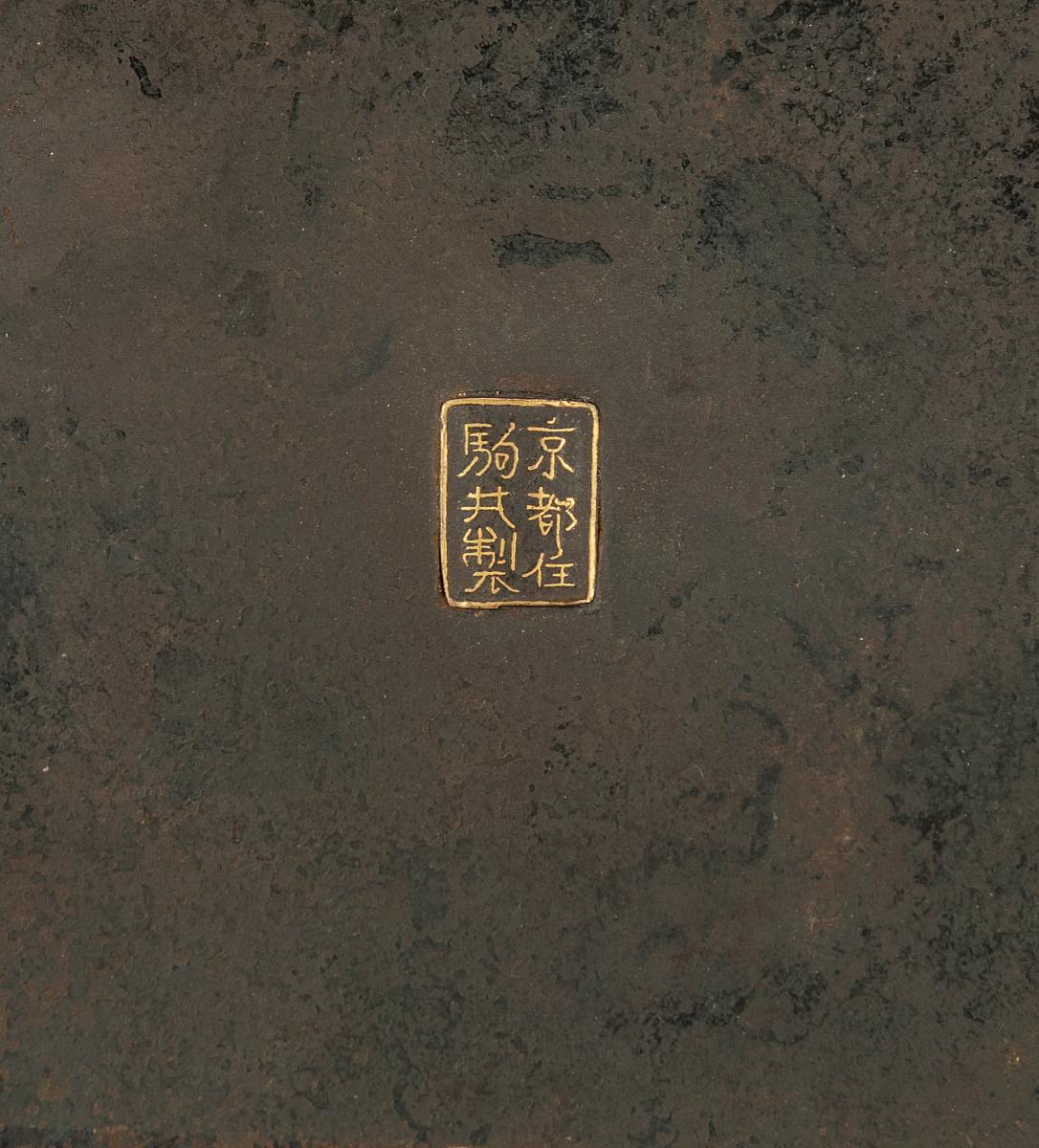
This object includes complimentary, Insured Shipping / Delivery within the UK
This object includes complimentary, International Insured Shipping
This object is eligible for a Certificate of BADA Provenance
The BADA Standard
- Since 1918, BADA has been the leading association for the antiques and fine art trade
- Members are elected for their knowledge, integrity and quality of stock
- Our clients are protected by BADA’s code of conduct
- Our dealers’ membership is reviewed and renewed annually
- Bada.org is a non-profit site: clients deal directly with members and they pay no hidden fees
Fascinating Japanese Iron Panel – Komai Company of Kyoto.
As part of our Japanese works of art collection we are delighted to offer this fascinating early Meiji period (1868-1912) iron wall panel manufactured by the highly regarded Komai company of Kyoto during their earlier period of production, in around 1880. The heavy gauge iron panel is finely detailed with multiple mixed metals worked as characters within and around buildings in landscape settings, the resulting picture portraying the rather interesting and historically significant story of Japanese silk production(see literature).The landscapes and buildings are painstakingly carved into the iron plate then bought to life with mixed alloys including silver, shibuichi, shakudo and significant use of lavish gold detailing . This historically important panel is housed within a Japanese black lacquered frame of the period and is signed to the rear within a six character signature seal, this translates as “Kyoto Ju Komai Sei”or made by Komai of Kyoto.
Literature :
As stated, this opulent mixed metal decorated panel records the important historical story of traditional silk manufacture in Japan during the 19th century, a manufacturing process that was first bought to Japan as early as the 4th century, most likely from China.
The everyday scenes portrayed in this work appear to include picking leaves from the mulberry bushes which were required to feed the silk worms, the drying process of the worms into cocoons, the dying and further drying of the silk, until finally the spinning process can begin .
This industry literally exploded during the Meiji Period with government sponsorship of basically anybody that had some land to farm, traditional farmers and landowners were given silk worms and taught how to cultivate them. This significant promotion of the silk industry soon resulted in a quantity and quality of silk that eventually upstaged the centuries old demand for Chinese silk, a silk that was at one time restricted for Imperial wear, such was its prized value.
At one point during the latter part of the 19th century Japan’s silk output accounted for around 80% of the country’s exports, thus was the significance of this commodity to the Japanese economy, and in particular the rural farming industry.
Provenance :
USA Collection
Approximate Sizes :
Height : 19 1/2″ 49.5 cm
Width : 17″ 43 cm
Panel only : 16 1/8″ 41 cm x 14 1/8″ 36 cm
Free worldwide delivery and a certificate of authenticity are included within the price of this item.
Dimensions
Height : 19 1/2″ 49.5 cm Width : 17″ 43 cm Panel only : 16 1/8″ 41 cm x 14 1/8″ 36 cmThis object includes complimentary, Insured Shipping / Delivery within the UK
This object includes complimentary, International Insured Shipping
This object is eligible for a Certificate of BADA Provenance
The BADA Standard
- Since 1918, BADA has been the leading association for the antiques and fine art trade
- Members are elected for their knowledge, integrity and quality of stock
- Our clients are protected by BADA’s code of conduct
- Our dealers’ membership is reviewed and renewed annually
- Bada.org is a non-profit site: clients deal directly with members and they pay no hidden fees


